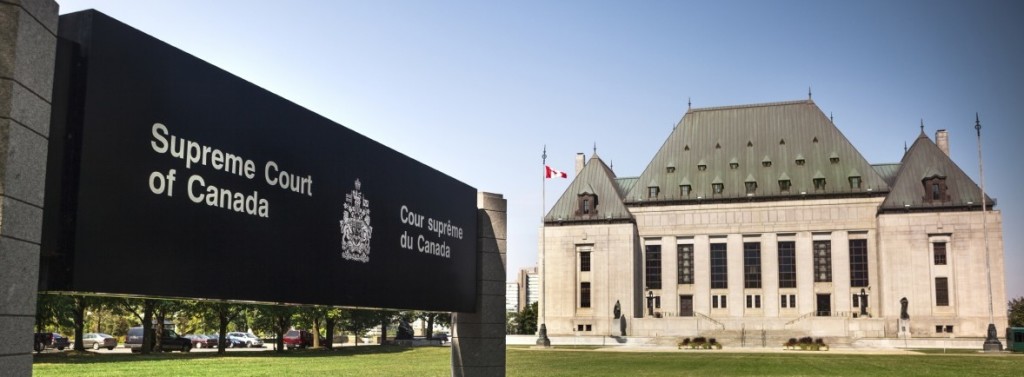How Foreign Supreme Courts Became More Open and Accountable Than Ours
FTC’s “Blueprints for Transparency” report looks at broadcast and retirement age provisions in high courts of Australia, Brazil, Canada, Germany and the U.K. with an eye toward SCOTUS reform
The age and health of justices in times of national crisis, the ability of elected officials to use the threat of retirement as a political tool and the relatively young age of a democracy itself are the primary factors that have compelled foreign nations to enact retirement age provisions for their nation’s top judges, according to a Fix the Court report released today.
The organization also deduced why the high courts of Australia, Brazil, Canada, Germany and the U.K. are more open to broadcast that their American counterparts: either because their judiciaries are constitutionally subordinate to (often pro-broadcast) legislatures, their state-owned media companies have tirelessly advocated for cameras, a series of high-profile cases have captured the nation’s attention, their top judges generally favor cameras – or some combination thereof. (Read the report here.)
“Fix the Court is hoping these insights will be useful for advancing our own strategies for transparency improvements stateside,” the organization’s executive director, Gabe Roth, said. “That there’s been no evidence such provisions have weakened the administration of justice the world over means our high court should not delay in implementing these and other best practices in judicial accountability.”
The courts of last resort in Australia (70 years), Brazil (75), Canada (75), Germany (68) and the U.K. (70) all have mandatory retirement ages for their justices. Germany also has term limits for federal judges (12 years). Additionally, all five high courts have more permissive broadcast policies, with some live-streaming their hearings online (Brazil, Canada and the U.K.), others filming their hearings for broadcast within 24 hours (Australia) and others still having no live-streaming or video-recording of hearings but do at least film opinion announcements for later broadcast (Germany).
OUR FINDINGS
Factors that have aided in the passage of mandatory retirement age provisions:
- The relatively young age of the democracy. Countries with newer constitutions (Australia, Brazil, Canada and Germany) are more likely to have implemented terms limits or a retirement age at or near the time of ratification than older democracies (U.S. and U.K), which by and large take their tenure cues from pre-18th century common law understandings of judicial service;
- The ability of politicians to use the threat of retirement as a political tool, either to convince an aging jurist to step down (Australia and Canada) or to prevent a president from nominating his or her own justices (Brazil); and
- The relative age and frailty of sitting justices at times of political upheaval (Australia and Canada).
Notes about the U.S.: There have been more than a dozen instances of real or rumored mental decrepitude in the history of SCOTUS, yet none has triggered a serious discussion about implementing a retirement age provision. The closest the institution has come to having one was tied to President Roosevelt’s court-packing plan, which would have granted FDR the power to appoint an additional justice to SCOTUS for every member of the court over the age of 70.5. That plan, of course, never came to fruition.
Factors that have aided in the passage of pro-broadcast provisions:
- A group of state-run media channels or legal organizations diligently pushing the judiciary to change their broadcast policies (Australia, Canada, Germany and the U.K.);
- A high-profile case that either captures the nation’s attention (Canada and Germany) or yields a pro-broadcast interpretation of a Sixth Amendment-type law (also Canada);
- A number of sitting judges who generally favor of broadcast (Australia, Brazil and Canada); and
- Decentralization of the high court’s power (Canada, Germany and the U.K.), as nations whose top courts lack judicial review (Canada has only had it since 1982, and the U.K. does not have it) and/or are subservient to a parliament (U.K.) or whose constitution provides for a decentralized federal court system (Germany), are more likely to be televise given that any judicial opposition to broadcast is less likely to sway legislators.
Note about the U.S.: The U.S. only has nos. 1 (e.g., C-SPAN) and 2 (e.g., marriage, abortion, Obamacare, etc.) above. All eight justices have switched from their pro or neutral stances on cameras to anti. And our high court has judicial review and is seen as a “co-equal” branch.
Factors that have hindered the passage of broadcast or retirement age provisions:
- If political parties disagree about the policies (Australia, for a few months, on a state court broadcast proposal); and
- If such a proposal is seen as potentially helpful only to a single party, as opposed to both parties or to the nation as a whole (Brazil, nearly, regarding the extension of the mandatory retirement age).
Note about the U.S.: This is where the U.S. seems slightly ahead of the curve. A majority of Democrats and Republicans, both on Capitol Hill and across the country, agree that SCOTUS should loosen its broadcast restrictions in some way – whether via same-day audio, live audio or video recording. On term limits, a majority of Americans support implementing 18-year terms, with a slightly higher percentage of Republicans than Democrats nationally backing the proposal. On Capitol Hill, opinions on SCOTUS terms limits are all over the map, though Fix the Court is working on educating folks about the problems with life tenure at the high court.
